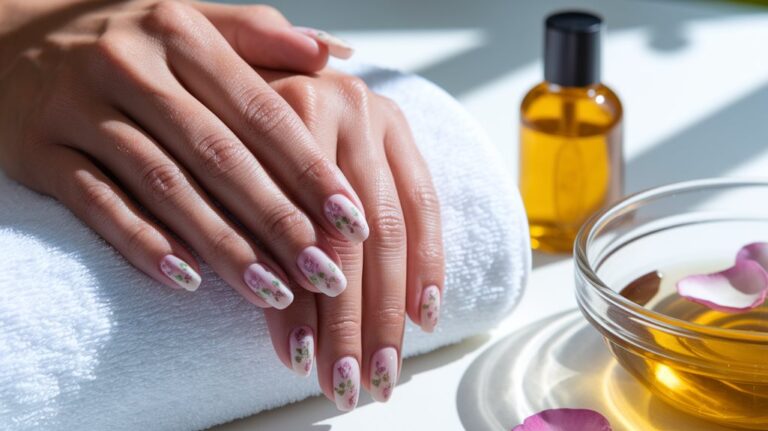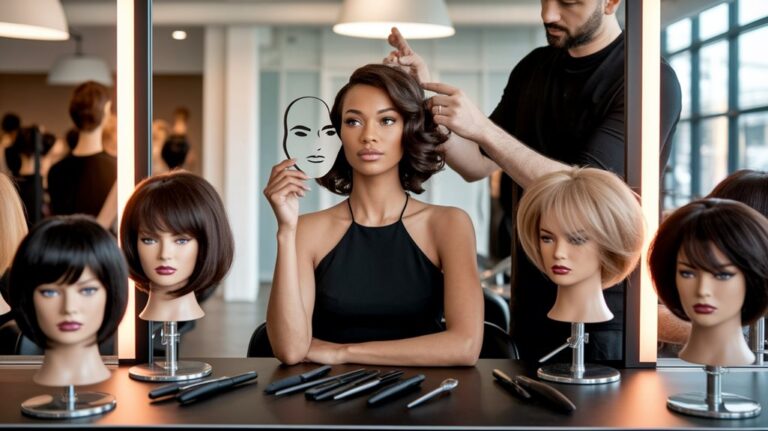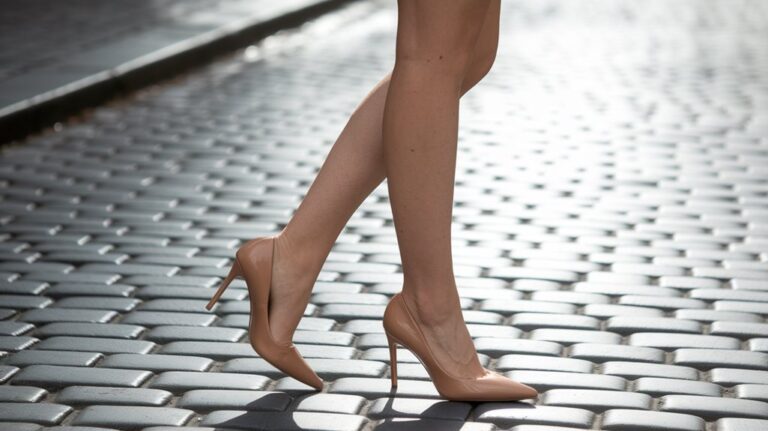How to Make Any Hairstyle Last All Day Without Frizz (Even in 90% Humidity!)
So you’ve just spent 45 minutes perfecting your hairstyle. Your hair looks salon-worthy, sleek, and absolutely gorgeous. You step outside feeling confident, only to catch your reflection in a store window 20 minutes later—and your heart sinks. Your once-perfect hair now resembles a frizzy halo, with flyaways dancing in every direction.
If this scenario sounds painfully familiar, you’re not alone. According to recent studies, 95% of women report struggling with frizz, making it one of the most common hair frustrations worldwide. But here’s the good news: frizz isn’t an inevitable fate. With the right knowledge, techniques, and products, you can make any hairstyle last all day without succumbing to humidity’s cruel tricks.
This comprehensive guide combines cutting-edge hair science with professional styling secrets to give you the ultimate frizz-fighting arsenal. While you have pin-straight strands or corkscrew curls, fine hair or thick locks, we’ll show you exactly how to achieve lasting, frizz-free results.
The Science Behind Frizz: Understanding Your Hair’s Molecular Story
Before diving into solutions, let’s understand what’s actually happening when your hair goes from smooth to chaotic. Frizz isn’t just a cosmetic annoyance—it’s a complex molecular process that occurs at the microscopic level of your hair shaft.
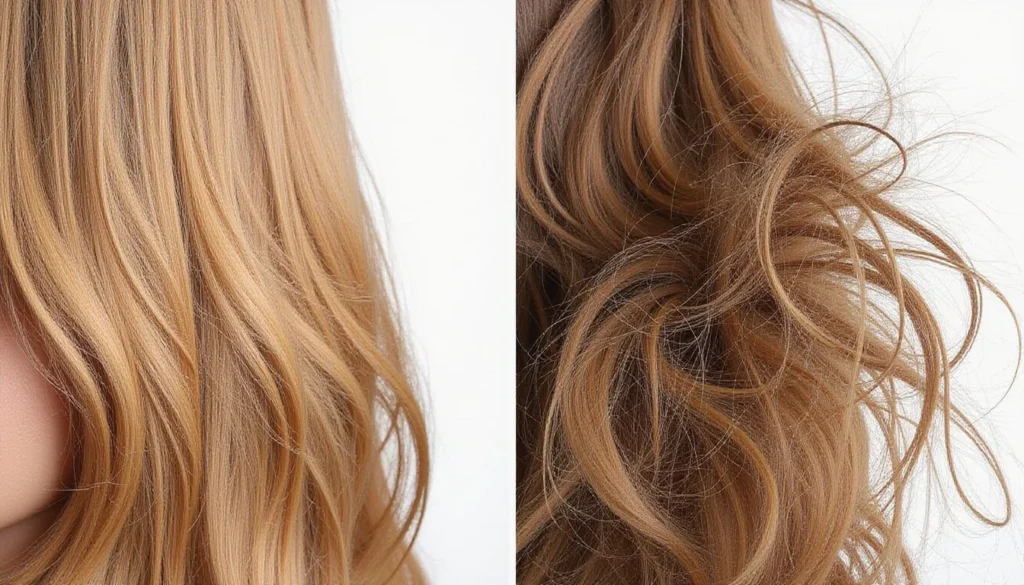
The Cuticle Connection
Your hair consists of three layers, but the outermost layer—the cuticle—is the key player in the frizz game. Think of cuticles as overlapping scales, like roof shingles. According to research published in PMC, the cuticle comprises 10% of the total hair weight and is composed of 5–12 layered β-keratins that function to protect the inner layers and hold moisture.
When these cuticles lie flat and smooth, your hair reflects light evenly and appears sleek and shiny. When they’re raised or damaged, moisture can enter the hair shaft, causing swelling and frizz.
The Hydrogen Bond Breakdown
When humidity is high, water molecules from the air form hydrogen bonds with the keratin proteins in your hair. Research from Nature Communications Biology explains that keratin proteins are stabilized by the formation of inter- and intra-molecular disulfide bonds, but these can be disrupted by environmental moisture.
These new hydrogen bonds compete with your styled hair’s existing bonds, causing your hair to “forget” its styled shape and revert to its natural texture.
Here’s the fascinating part: hygrometers (humidity-measuring devices) actually use human hair for readings because according to scientific studies, hair is so sensitive to atmospheric moisture that straight hair becomes wavy, wavy hair becomes curly, and curly hair becomes even curlier in humid conditions.
The Porosity Factor
Hair porosity determines how easily your hair absorbs and releases moisture. Clinical research published in ScienceDirect shows that damaged hair becomes intensely porous, with water absorption causing the hair shaft to swell. There are three levels:
- Low Porosity: Cuticles are tightly closed, making it harder for moisture to enter (and exit)
- Medium Porosity: Balanced moisture absorption and retention
- High Porosity: Cuticles are raised or damaged, allowing moisture to easily enter and escape
High porosity hair is naturally frizzy with a rough, raised cuticle that pulls moisture from the atmosphere and becomes even puffier in humid weather.
Know Your Hair: The Foundation of Frizz Control

Understanding your specific hair type and porosity is crucial for selecting the right products and techniques. Here’s how to determine what you’re working with:
Quick Hair Porosity Test
- The Float Test: Drop a clean strand of hair into a glass of water
- Floats on top = Low porosity
- Hovers in the middle = Normal porosity
- Sinks immediately = High porosity
- The Slide Test: Run your fingers up a strand from tip to root
- Smooth feeling = Low porosity
- Slightly bumpy = Normal porosity
- Very rough/bumpy = High porosity
Hair Type Classifications
Understanding your hair type is the foundation of effective frizz control
The Pre-Styling Prep Protocol: Setting the Foundation
Great hairstyles that last all day start long before you pick up your styling tools. This prep phase is where most people go wrong, but it’s also where you can make the biggest impact.
Step 1: The Right Wash Routine
Choose Your Shampoo Wisely
- Prep your mane with a smoothing shampoo and conditioner to avoid crown fuzz altogether. The right formulas help hydrate, soften, and prep hair for heat styling
- Look for sulfate-free formulas with ingredients like:
- Argan oil for moisture and shine
- Keratin proteins for strength and smoothness
- Ceramides for cuticle repair
Research from the Royal Society of Chemistry demonstrates that keratin treatments can re-establish hydrogen and disulfide bonds lost during chemical treatments, improving hair’s mechanical properties and reducing frizz formation.
The Temperature Trick Hot water opens up your hair cuticles, whereas cool water helps to seal them. Opt for lukewarm water during washing, then finish with a cold rinse to seal everything smooth.
Step 2: Strategic Conditioning
Regular Conditioning
- Focus conditioner on mid-lengths and ends, avoiding roots
- Leave on for 2-3 minutes minimum for proper penetration
- Squeeze excess water from hair before applying conditioner, then leave for 3-4 minutes to really soak into the hair shaft
Weekly Treatment Protocol For damaged or high-porosity hair, incorporate a deep conditioning mask once per week. Apply to damp hair, cover with a shower cap, and leave for 15-20 minutes.
Step 3: The Drying Game-Changer
Towel Technique Matters Scrubbing wet hair with a terry cloth towel is out. Gently squeezing strands with a microfiber towel or cotton t-shirt prevents friction and frizz.
Pre-Dry Protocol
- Gently squeeze out excess water
- Apply leave-in products to damp (not soaking) hair
- Make sure your hair is 100% dry before leaving the house. Even partially damp hair cuticles are more open and likely to absorb moisture and swell up
The Ultimate Product Arsenal: Your Frizz-Fighting Toolkit

The key to all-day frizz control lies in layering compatible products that work together to create multiple barriers against humidity. Here’s your comprehensive product guide by hair type:
For Fine, Straight Hair (Type 1)
Essential Products:
- Volumizing Shampoo & Conditioner: Look for lightweight formulas that won’t weigh hair down
- Root Lifting Spray: Apply to damp roots before blow-drying
- Light Hold Hair Spray: Choose flexible hold creams that tame frizz without sacrificing volume, particularly effective for fine hair
Pro Tip: Fine hair is often low porosity, so avoid heavy oils and opt for water-based serums instead.
For Wavy Hair (Type 2)
Essential Products:
- Curl-Enhancing Shampoo: Maintains natural wave pattern while fighting frizz
- Leave-in Conditioner: Provides moisture without weighing down waves
- Wave-Defining Cream: Color Wow’s anti-humidity spray eliminates frizz with its moisture-repelling “invisible cloak” that leaves strands silky smooth
- Anti-Humidity Spray: Creates a protective barrier against environmental moisture
For Curly Hair (Type 3)
Essential Products:
- Sulfate-free Moisturizing Shampoo: Cleanses without stripping natural oils
- Rich Conditioner: Heavy moisture is crucial for curl definition
- Curl Cream: Defines curls while providing hold
- Anti-Frizz Gel: In extreme humidity situations, Ouidad Advanced Climate Control Heat and Humidity Gel is particularly effective for curly hair
Recent genetics research published in Experimental Dermatology reveals that curly hair formation involves complex genetic factors including trichohyalin gene variations and asymmetric keratin expression patterns, explaining why curly hair requires specialized care approaches.
For Coily Hair (Type 4)
Essential Products:
- Co-washing Cleansers: Gentle cleansing that preserves moisture
- Deep Conditioning Masks: Use weekly for intense hydration
- Leave-in Moisturizer: For afro hair, use a leave-in moisturizer that enables the hair to maintain its style and prevent shrinkage
- Hair Oils: Seal moisture and provide heat protection
Universal Must-Haves
Heat Protectant: This product gives two benefits: heat protection and humidity blocking. Apply before heat styling for best results
Anti-Humidity Serum: Orlando Pita’s cream-serum hybrid proved most effective in lab tests, keeping hair smooth for nearly 24 hours in up to 85% humidity
Step-by-Step Styling Techniques That Last
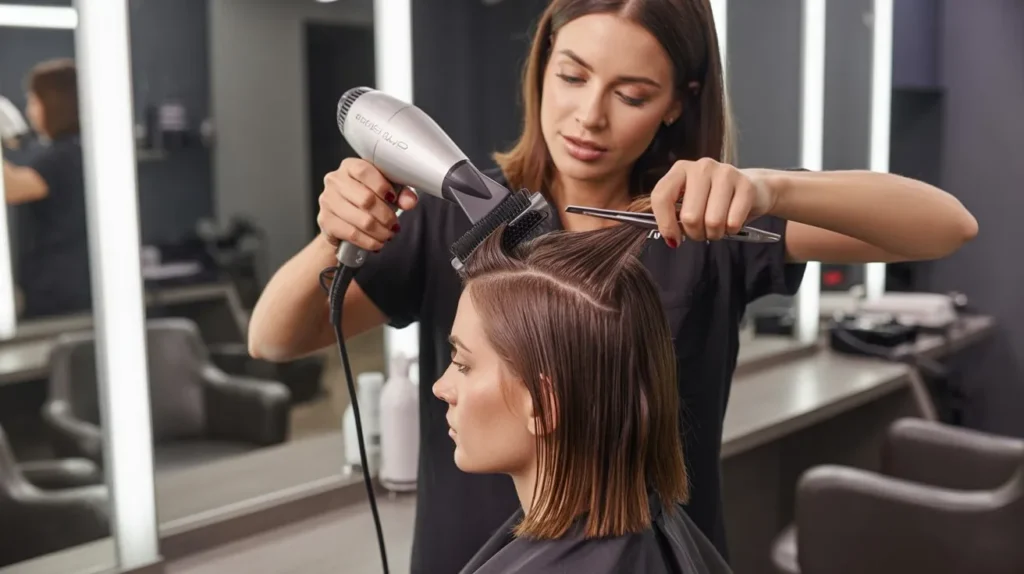
The Professional Blow-Dry Method
Equipment You’ll Need:
- High-quality blow dryer with ionic technology
- Round brush (size depends on hair length)
- Heat protectant spray
- Sectioning clips
The Technique:
- Section Strategically: Divide hair into 6-8 sections, securing with clips
- Direction Matters: When using a hairdryer, dry in the direction of the hair shaft for smooth results
- Cool Shot Finish: After styling each section, allow it to cool before moving on. Cooling helps set the style and seal the hair cuticle
- Lock It In: Finish with a light mist of hairspray on each section
The Second-Day Hair Advantage
Clean hair is notoriously difficult to work with when it comes to styling; expect curls dropping, hair sliding out of up-dos and flyaways aplenty. Here’s how to capitalize on this:
Day-Before Prep:
- Wash hair the night before styling
- Apply texturizing products to damp hair
- Sleep with hair in a loose braid or protective style
Day-Of Enhancement:
- Try dry foam products like Zhoosh that deliver extra grit and hold, helping any style stay put on days two and three
- Refresh with texturizing spray at roots
- Focus styling products on problem areas only
Weather-Proofing Your Hair: Environmental Strategy Guide
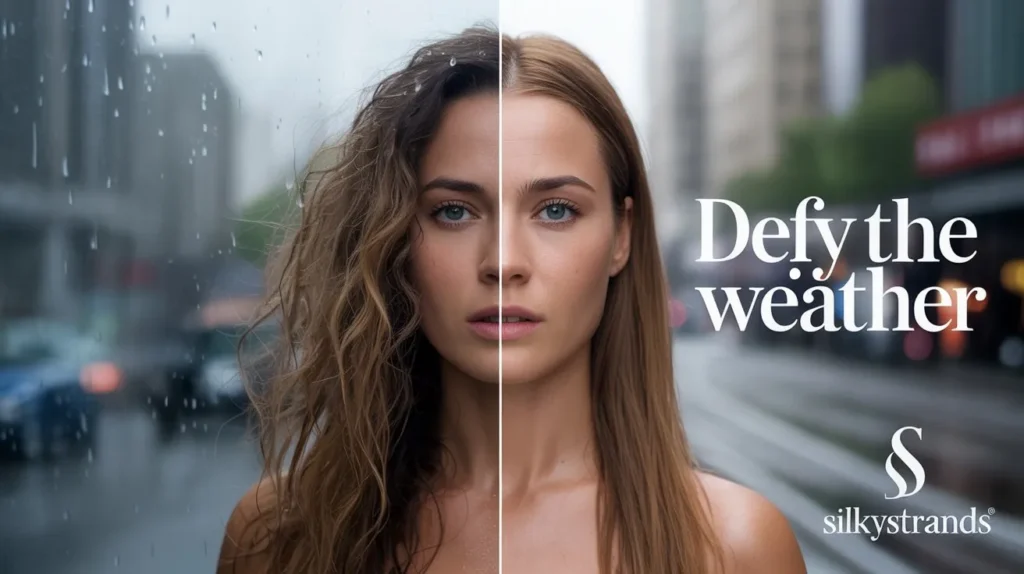
High Humidity (60%+ humidity)
Before You Style:
- Use extra anti-humidity products
- Opt for protective styles (buns, braids, ponytails)
- Apply lightweight serums or gels that form a protective barrier around each strand, sealing the cuticle to lock in moisture and keep out excess humidity
Product Recommendations:
- Heavy-duty anti-humidity sprays
- Silicone-based serums
- Strong-hold styling products
Rainy/Wet Weather
The Lamination Technique: Smooth, silky serums like argan oil coat the hair shaft, protecting it from heat and humidity, just like lamination. This helps prevent hair from going frizzy in the rain
Emergency Kit Essentials:
- Travel-size anti-frizz serum
- Small brush or comb
- Compact mirror
- Hair ties for quick updos
Extreme Heat
Heat Protection Strategy:
- Use products with SPF for hair
- Minimize heat styling when possible
- In hot weather, a high ponytail or banana bun helps keep the nape clear and prevent perspiration from ruining your hairstyle
When Things Go Wrong
Problem: Frizz Appears Throughout the Day
Quick Fixes: Use anti-frizz serum for touch-ups throughout the day. Warm the product in your hands and apply to dry hair to banish flyaway hairs
Alternative Method: Spray hairspray onto a comb and style, rather than spraying directly onto your hair
Problem: Hair Goes Flat
Immediate Solutions: Lean your head forward and spray hairspray at the roots, then massage gently to restore volume
Prevention:
- Use volumizing products at roots
- Avoid over-conditioning the scalp area
- Try root-lifting techniques during blow-drying
Problem: Curls Drop or Lose Definition
Revival Techniques: For curly hair, redefine a few curls by wrapping them around your finger
Long-term Solutions:
- Invest in stronger-hold styling products
- Consider curl-enhancing treatments
- Use diffusing techniques instead of air-drying
Professional Secrets & Advanced Techniques
The Hairstylist’s Toolkit
Professional-Grade Tools: An artist is only as good as their tools. Invest in professional ranges that help achieve salon-worthy styles guaranteed to last all day
- Ionic Hair Dryers: Reduce frizz with negative ion technology
- Ceramic/Titanium Tools: Provide even heat distribution
- Quality Brushes: Natural bristles distribute oils and smooth cuticles
Advanced Product Layering
The Professional Method:
- Base Layer: Leave-in conditioner for moisture
- Protection Layer: Heat protectant for styling safety
- Style Layer: Styling cream or gel for hold
- Finish Layer: Anti-humidity spray for environmental protection
- Lock Layer: Light hairspray to set everything in place
Cleveland Clinic research confirms that keratin’s unique molecular structure, with its abundance of cysteine amino acids forming disulfide bonds, provides the strength and resilience that makes strategic product layering so effective for long-lasting styles.
Overnight Protection Strategies
The Silk Secret: Silk is gentle on hair strands, reducing breakage and split ends. Sleeping on silk helps maintain your hairstyle while reducing static electricity
Protective Styling for Sleep:
- Loose braids for wavy results
- Silk scrunchies to prevent creasing
- Satin pillowcases to reduce friction
Budget-Friendly Alternatives That Actually Work
DIY Anti-Frizz Treatments
Coconut Oil Hair Mask: Mix 2 tablespoons coconut oil with 1 tablespoon honey. Apply to damp hair, leave for 30 minutes, then shampoo out.
Apple Cider Vinegar Rinse: Mix 1 part ACV with 3 parts water. Use as a final rinse to seal cuticles and add shine.
Drugstore Product Picks
Best Value Options:
- L’Oréal Elvive Anti-Frizz Serum: Affordable silicone-based protection
- TRESemmé Climate Protection Spray: Budget-friendly humidity blocker
- Garnier Fructis Sleek & Shine: Lightweight anti-frizz cream
Household Items as Styling Tools
Microfiber Towels: Use clean microfiber cloths instead of expensive hair towels Cotton T-Shirts: Gentler than regular towels for drying Silk Scarves: Wrap around hair for overnight protection
Daily Maintenance & Touch-Up Strategies
Morning Refresh Routine (5 Minutes)
- Assess the Situation: Check for frizz, flatness, or loss of style
- Strategic Spritzing: Lightly mist problem areas with water or leave-in conditioner
- Targeted Products: Apply small amounts of styling products only where needed
- Quick Style: Use fingers to reshape, scrunch, or smooth as needed
- Final Protection: Light mist of anti-humidity spray
Midday Touch-Ups
Office-Friendly Kit:
- Travel-size anti-frizz serum
- Small brush or wide-tooth comb
- Hair ties and bobby pins
- Compact mirror
Quick Fixes:
- Smooth flyaways with damp hands
- Tuck frizzy sections behind ears
- Create intentional texture with strategic scrunching
End-of-Day Assessment
Evening Routine:
- Gently brush or comb hair to redistribute products
- Apply a small amount of nourishing oil to ends
- Braid loosely or tie in a silk scrunchie for sleep protection
Key Takeaways: Your Frizz-Free Action Plan
The Bottom Line: Achieving all-day, frizz-free hairstyles isn’t about finding one magic product—it’s about understanding your hair’s unique needs and creating a comprehensive system that works together.
The Essential Strategy:
- Start with Science: Understanding the molecular basis of frizz helps you choose products and techniques that actually work
- Know Your Hair: Porosity and texture determine which products and methods will be most effective
- Layer Your Defense: Multiple products working together create stronger protection than any single product alone
- Prep is Everything: The foundation you create during washing and conditioning determines your styling success
- Weather Awareness: Adapt your routine based on environmental conditions
- Consistency Counts: Regular maintenance and touch-ups keep your style looking fresh all day
The Quick-Start Guide:
Week 1: Determine your hair type and porosity, invest in a good anti-humidity spray Week 2: Master the proper blow-drying technique with sectioning and cooling Week 3: Experiment with product layering and find your optimal combination Week 4: Develop your maintenance routine and emergency touch-up strategies
Professional Insights to Remember:
- “Second day hair” is actually easier to style than freshly washed hair
- Cooling down your hair after each section helps set the style and seal the cuticle
- Hair tends to become affected by frizz when humidity climbs above 60%
- The most effective anti-frizz products can keep hair smooth for nearly 24 hours even in 85% humidity
Remember: Great hair days aren’t about perfection—they’re about understanding your hair’s unique personality and working with it, not against it. With the right knowledge, products, and techniques, you can turn even the most humid day into a good hair day.
The journey to consistently frizz-free hair takes time and experimentation, but armed with this comprehensive guide, you’re well-equipped to make any hairstyle last all day, no matter what Mother Nature throws your way.


